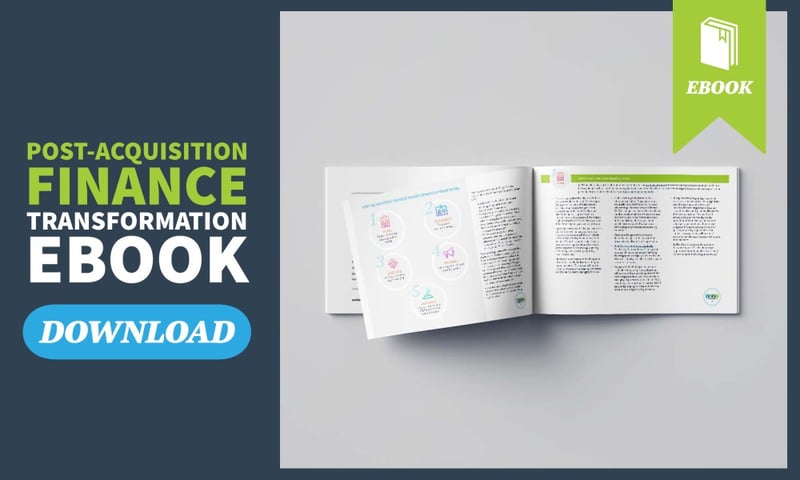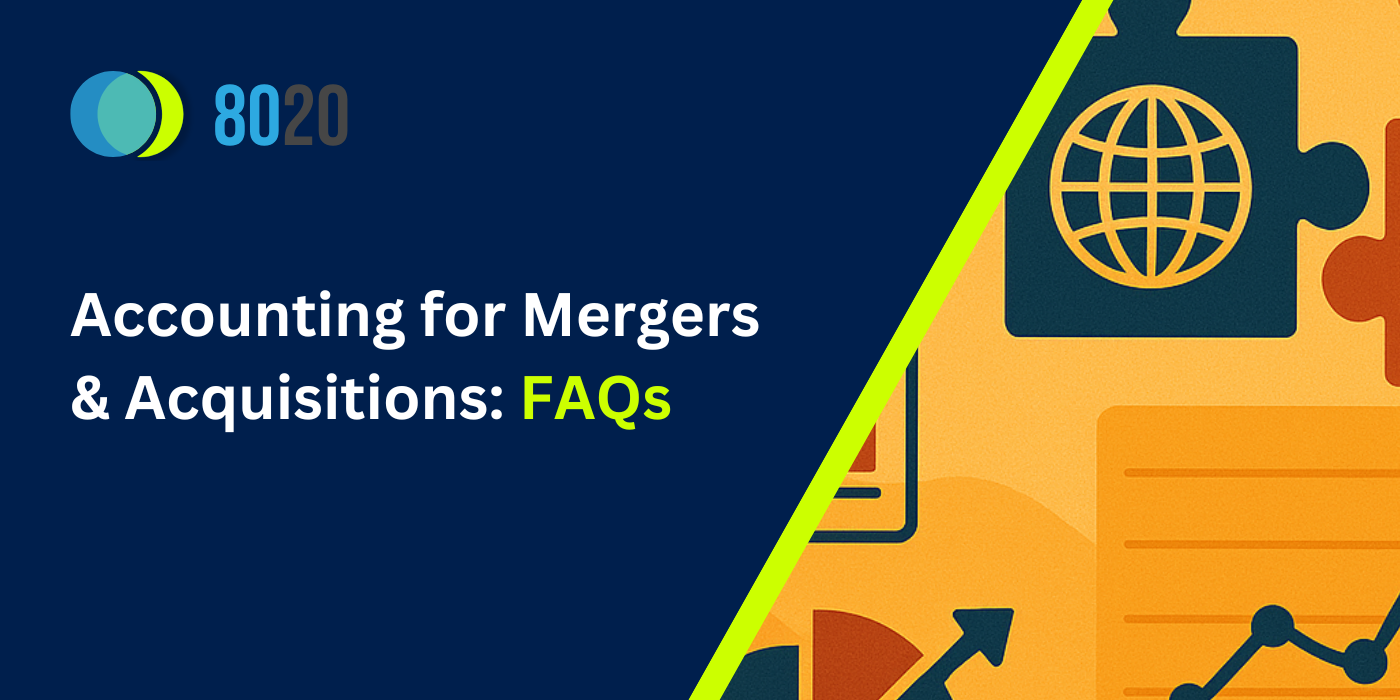8020 Consultant Scott Longacre has guided accounting integrations in Mergers & Acquisitions (“M&A”) since 2001. As a Consultant, Scott has performed system implementations, re-engineered business processes, created forecasting and budgeting models, and managed internal and external financial reporting. He has successfully filled the role of interim CFO for several companies, managing them through the acquisition as well as post acquisition integration plan template for the acquiring companies.
We asked Scott to share his advice about the best way to ensure a smooth accounting integration in an M&A transaction.
Key Takeaways
|
Table of Contents
- Q: What are the greatest challenges companies face regarding accounting integration systems in a merger and acquisition?
- Q: IT plays a huge role in a successful integration. Should an IT expert be heading up the integration team?
- Q: Who should lead the integration, if not IT?
- Q: How long does accounting M&A take?
- Q: You’ve been involved in a number of M&A transactions. What is the difference between a rocky accounting integration versus one that is smooth and efficient?
- Q: If a company is using an external person to manage the acquisition, when should s/he be brought in?
Q: What are the greatest challenges companies face regarding accounting integration systems in a merger and acquisition?
A: When you are merging two companies – particularly when a smaller company has been acquired by a much larger one – there will inevitably be cultural, IT and methodology differences that pose challenges. For example, one company might value inventory differently than the other, have a different methodology for revenue recognition, different capitalization thresholds, or one might have lax internal controls while the other is much stricter.
The two greatest challenges that I see across the board involve people and financial systems.
Personality & Culture Clashes
First, there is almost always a personality and culture clash. In my role, I act as mediator to make sure that each side is heard and then build consensus to enable the accounting teams of the acquirer and the acquired to work together. Understanding where each side is coming from and helping each side build their case, while at the same time helping them see the merits of the other side’s position, is arguably the most important trait to effectively facilitate the integration.
Integrating new systems
Integrating systems is more technical, but it is also about people. Leaders of the acquired company are accustomed to doing and seeing things a particular way and you have to figure out a method to transition them to a new system, plus translate data and reports into a format that is useable and meaningful to the people managing the business.
Q: IT plays a huge role in a successful integration. Should an IT expert be heading up the integration team?
A: It’s true that M&A poses huge challenges for any IT infrastructure, but as it relates to the accounting related system integration, typically the individuals in the IT group do not have nor should they be expected to have, the accounting and finance expertise required to accommodate an accounting system integration.
Q: Who should lead the integration, if not IT?
A successful integration is generally led by somebody who can identify the information needed and who works well with people from all functional areas. It is important to have a general understanding of how different software and systems work in order to anticipate challenges, but it is key to have someone at the center who can say “this is what we need” and work closely with the IT experts and the end users to ensure that they understand what needs to be done and what the deliverable is.
Q: How long does accounting M&A take?
If both companies are on the same accounting architecture, the businesses are similar, and data is mapped similarly, an integration could take as little as 90-180 days. If you are moving from different platforms – for example from Dynamics to Oracle – and different types of business – for example integrating a service business into a system that is designed for manufacturing – it could take six to twelve months.
Q: You’ve been involved in a number of M&A transactions. What is the difference between a rocky accounting integration versus one that is smooth and efficient?
A: Unless you have an external person who manages the process, the acquisition integration has a higher probability of failure because you are going to have culture shock. The acquiring company is in a position of power over the acquired. People at the acquired company are going to be nervous and distrustful. The only way to build trust on both sides is to have an independent third party who has an understanding and genuine appreciation for the challenges and concerns of both sides. They can serve as a mediator to resolve grievances and can advocate in a consensus building manner. An external person makes it possible for people on both sides to feel that they are being heard and appreciated.
Creating a post-acquisition integration plan template is a full-time job requiring intensity of focus and deep experience. It requires persistent follow up and follow through with all the stakeholders on both sides in order to stay on schedule. Questions are always being asked by both sides, and someone needs to be able to respond to them promptly and accurately in order to minimize project delays. The work needs to be led by a high level person, but typically a VP or Controller doesn’t have sufficient time to devote to the integration. When these individuals are setting their priorities, the post-acquisition integration more often than not comes after their need to run day-to-day operations or to address ad hoc “emergency” requests from the C-suite.
Q: If a company is using an external person to manage the acquisition, when should s/he be brought in?
A: Ideally the individual should be brought in before the kick-off meeting that will occur between both companies regarding the post-acquisition integration work. The responsible parties within the acquiring company should meet with the external person engaged to oversee and manage the integration work. The meeting should result in a list of the names and titles of the responsible parties from both parties who need to attend the kick-off meeting. A flexible plan should be drawn up for the kick-off meeting that will be used as a tool to help both companies comment and suggest the best ways to have a successful integration and to develop the detailed post acquisition integration plan template.
Get expert support in accounting for mergers & acquisitions with 8020 Consulting
To learn more about accounting integration during an M&A, contact us today. You can also learn more by downloading our whitepaper on post-acquisition finance transformation:

